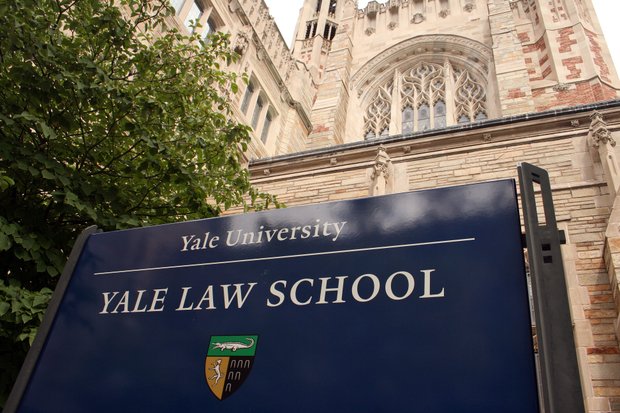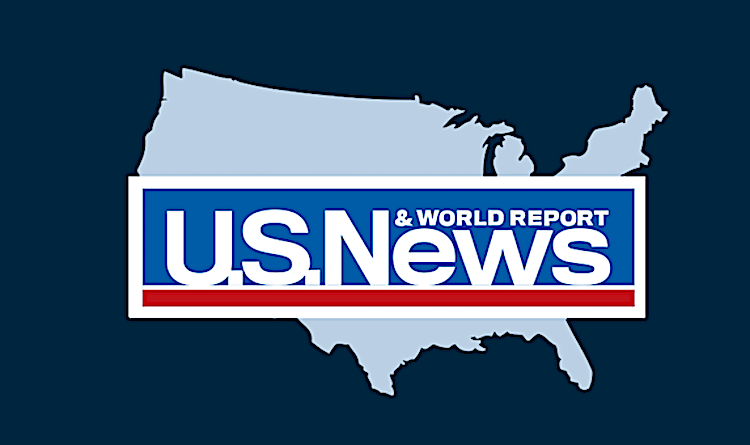“Nothing is certain but death and taxes.”
Few people would argue with that observation. Of course, many have attempted to add a third certainty to the list. Change is popular item. Often, jokesters will add their lousy weather or sports team to round it out. When it comes to consistency, it’d be hard to beat Yale Law. After all, the school has ranked #1 on U.S. News & World Report’s Law School Ranking since 1990. Today (March 29), Yale Law extended this streak to 33 years.
True to form, Yale Law edged out Stanford Law, the proverbial runner-up, in the 2023 ranking. However, this year’s ranking also reflected that uncertainty is central to life — even rankings. In a major shakeup, Harvard Law School, once Yale Law’s main competitor, dropped to 4th. To add insult to injury, HLS had to share the honor with Columbia Law. In its place, you’ll now find UChicago Law rounding out the Top 3. By the same token, Duke Law dropped out of the Top 10, while Brigham Young University maintained its momentum, climbing 14 spots in just two years.
METHODOLOGY LEANS HEAVY ON SURVEYS
To compile the rankings, U.S. News relies on four measures with varying weights:
Quality Assessment Survey: 40%
Placement Success: 26%
Selectivity: 21%
Resources: 13%
Quality assessment involves two surveys, which assess each law school’s quality on a 1 (Marginal) to 5 (Outstanding) scale. The “Peer Assessment” survey targets law school deans, faculty chairs, academic affairs deans, and newly-tenured faculty. In contrast, “Legal Professionals” includes judges, law firm hiring firms, and practicing attorneys. The peer portion accounts for 25% of the overall ranking, while legal professionals hold a 15% weight.
Placement encompasses five output metrics, including three month job placement (14%), job placement at graduation (4%), bar passage rate (3%), average debt at graduation (3%), and percentage of students in debt at graduation (2%). Selectivity covers inputs, including LSAT scores (11.75%), undergraduate GPAs (8.25%), and acceptance rate (1%). Finally, Resources includes instructional spending (9%), financial aid (1%), student-to-faculty ratio (2%), and library resources (1%).
Overall, these weights remain relatively consistent, with bar passage rate gaining .75 of a point and library resources losing an equal amount.

Yale Law
HOW YALE LAW DOES IT
For Yale Law, it was a strange year. The school lost ground in its traditional strengths, while shoring up areas where it lagged behind rivals. That starts with placement. With the Class of 2020, Yale Law boosted its placement rate within 10 months of graduation from 83.9% to 89.2%. At the same time, 2020 grads raised their weighted bar passage rate five points to 79%. That said, Yale Law, which historically posts the highest Peer Assessment score, dropped .2 of a point in this area. In addition, the school reported a 4% jump in the percentage of students carrying debt at graduation — with average debt rising an average $7,757 to boot.
Stanford Law lost .01 of a point in both the Peer Assessment and Legal Professionals surveys. However, the school still managed to score higher than rival schools in both measures — including Yale Law. Since these measures combine for a 40% of the ranking weight, Stanford Law enjoyed an up-front advantage this year. So why did the school fall short again? For one, the gap was closed by Stanford Law dawdling behind Yale Law in both LSAT scores and undergraduate GPA averages, which combine for a 20% weight. Even more, Stanford Law lost its decided advantage in 10 month placement. Last year, the school bested Yale Law here by a 90.1%-to-83.4% margin. That percentage changed to an 89.2%-to-89.0% difference…in favor of Yale Law. Checkmate.
UChicago Law improved in nearly every measure, aside from Law Professional survey (down .1 of a point to 4.5). Notably, LSAT averages climbed from 167-173 to 169-175, with undergraduate GPAs rising in a similar way (3.72-3.95 to 3.82-3.98). The school’s acceptance rate lowered from 18% to 12%, while its 10-month placement rate increasing by .5 of a point. At the same time, average debt dropped by nearly $7,000 for UChicago Law grads. Compare that to Harvard Law. Strangely, they gained ground in most measures, including better undergraduate GPAs and bar passage rate and a lower acceptance rate and average debt. The real difference? On the surface, Harvard Law lost .1 of a point in both the Peer Assessment and Legal Professionals surveys. However, the school also fell behind UChicago Law in both 10-month placement (95.6% vs. 91.8%) and percentage of graduates in debt (61.3% vs. 71.2%).
Texas A&M was the only new law school to enter the Top 50, with Pepperdine and UC-Hastings both dropping out.
WHAT U.S. NEWS GETS WRONG
Harvard Law wasn’t alone in losing some prestige in the all-important rankings game. Duke Law slipped out of the Top 10, courtesy of lower placement (though average debt plummeted by nearly $15,000). Notre Dame Law also fell three spots to #25 — despite improving in every measure. That includes higher LSATs (162-170 vs. 161-168) and a lower percentage of debt (66.8% vs. 75.5%). Arizona State (-5) and the University of Illinois (-6), Boston College (-8), and Wisconsin (-14) also suffered setbacks in U.S. News’ 2023 ranking.
This year’s big winner was unquestionably Brigham Young University. Ranked 37th just two years ago, the school climbed to 23rd in the 2023 ranking. It followed a similar formula as other risers: higher placement and lower debt. Ohio State and George Mason also jumped by 10 and 11 spots respectively to enter the Top 30.
Of course, there were five law schools clustered at the #30 spot. These ties are one reason to call the ranking into question somewhat. You’ll also find six schools tied at #37, and three more at both #17 and #25. That begs the question: Is U.S. News’ methodology so inflexible that it doesn’t allow for greater differentiation between schools? That’s not the only criticism leveled at the methodology. Notably, the Peer Assessment provides a 25% weight to a segment that often has little day-to-day exposure to the teaching, resources, and students at rival programs. Hence, the scores are based more on reputation. This makes them lagging indicators that don’t account for innovations at the programs. Even more, these reputational indicators give a 25% weight advantage to well-known schools, further reinforcing their advantage.
GEORGETOWN LAW CENTER DOMINATES PART-TIME MARKET
Along with full-time law schools, U.S. News also ranks part-time programs. Like its full-time cousin, the part-time ranking heavily weighs survey responses. In fact, surveys carry a 50% weight and use the same 1-5 scale. However, Legal Professionals are excluded from this evaluation, with U.S. News relying instead on the dean and three faculty members from each school. Selectivity makes up another 27.5% of the ranking. This is divided between LSAT and GRE scores (22.5%) and undergraduate GPAs (5%). The remaining methodology covers Part-Time Focus, a series of nine measures that include “the size of first-year sections for part-time students; the size of first-year small sections for part-time students; the number of positions filled by part-time students in law clinics, seminars, simulation courses and field placements; and the number of students involved in law journals and interschool skills competitions and enrolled in independent study.”
Here, the Georgetown Law Center is the equivalent to Yale Law in the full-time market. Like Yale Law, Georgetown notched a perfect 100 index score — a full 16 points above second-place George Washington Law (just two index points separate Yale Law and Stanford Law). In the Peer Assessment, the Georgetown Law Center scored a 4.2. Its LSAT scores, within the 25th to 75th percentile, range from 160-168, or roughly the equivalent to #25 Alabama. However, the program’s 6.2% acceptance rate is nearly half that of Harvard Law.
The DC corridor is unquestionably the best place to pursue a part-time law degree. George Washington, American University, and George Mason all rank in the Top 5 alongside the Georgetown Law Center. Just Fordham Law, ranked 3rd, deviates from this pattern. George Washington and Fordham also earned the highest assessment scores at 3.4, reporting LSAT ranges at 155-167 and 156-164 respectively.
Next Page: 2023 U.S. News Law School Ranking



Questions about this article? Email us or leave a comment below.